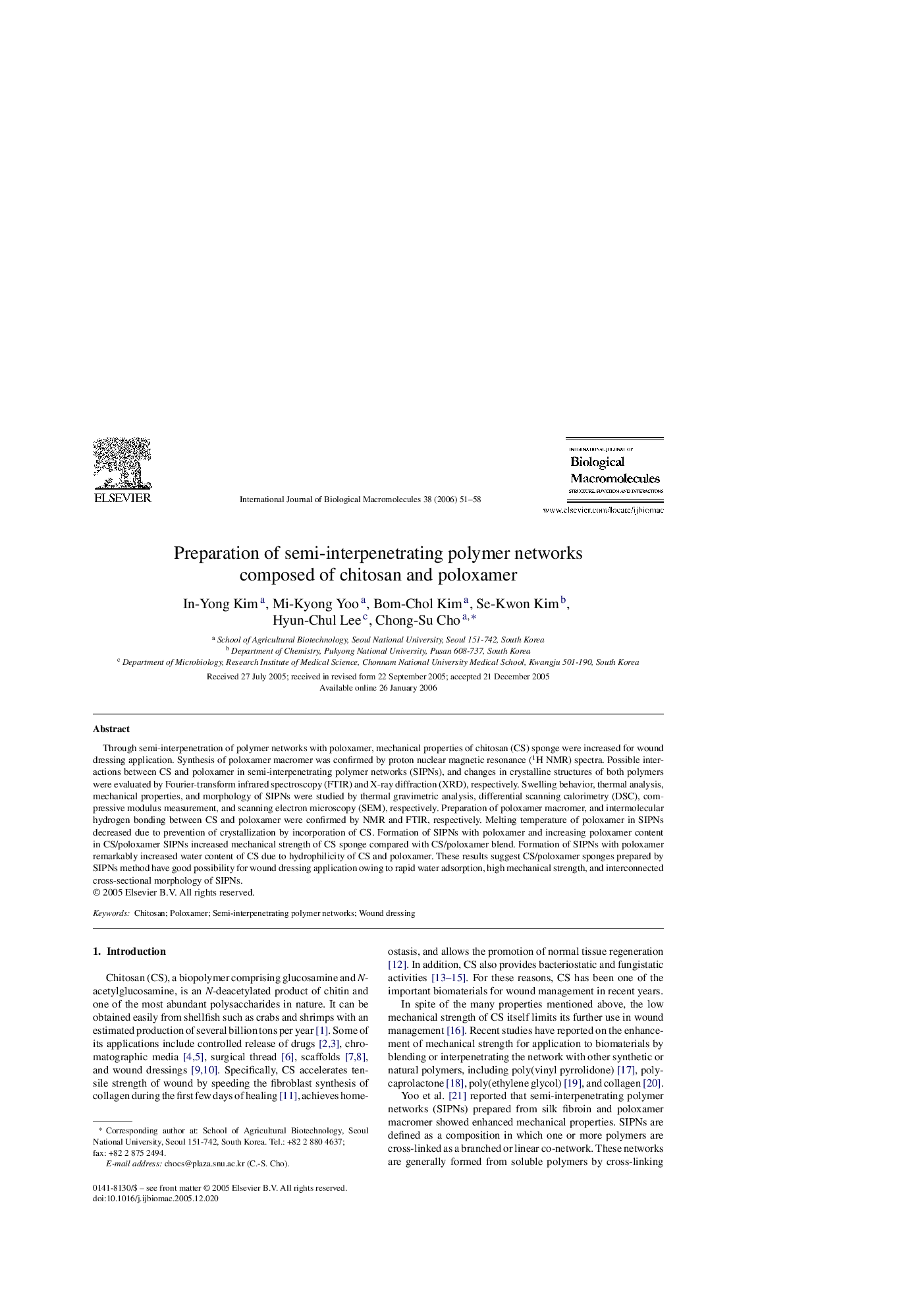| Article ID | Journal | Published Year | Pages | File Type |
|---|---|---|---|---|
| 1988160 | International Journal of Biological Macromolecules | 2006 | 8 Pages |
Through semi-interpenetration of polymer networks with poloxamer, mechanical properties of chitosan (CS) sponge were increased for wound dressing application. Synthesis of poloxamer macromer was confirmed by proton nuclear magnetic resonance (1H NMR) spectra. Possible interactions between CS and poloxamer in semi-interpenetrating polymer networks (SIPNs), and changes in crystalline structures of both polymers were evaluated by Fourier-transform infrared spectroscopy (FTIR) and X-ray diffraction (XRD), respectively. Swelling behavior, thermal analysis, mechanical properties, and morphology of SIPNs were studied by thermal gravimetric analysis, differential scanning calorimetry (DSC), compressive modulus measurement, and scanning electron microscopy (SEM), respectively. Preparation of poloxamer macromer, and intermolecular hydrogen bonding between CS and poloxamer were confirmed by NMR and FTIR, respectively. Melting temperature of poloxamer in SIPNs decreased due to prevention of crystallization by incorporation of CS. Formation of SIPNs with poloxamer and increasing poloxamer content in CS/poloxamer SIPNs increased mechanical strength of CS sponge compared with CS/poloxamer blend. Formation of SIPNs with poloxamer remarkably increased water content of CS due to hydrophilicity of CS and poloxamer. These results suggest CS/poloxamer sponges prepared by SIPNs method have good possibility for wound dressing application owing to rapid water adsorption, high mechanical strength, and interconnected cross-sectional morphology of SIPNs.
